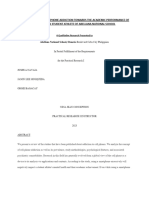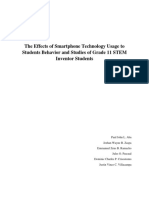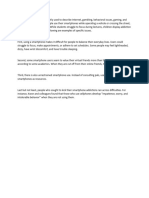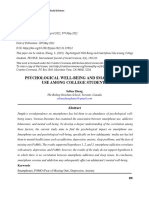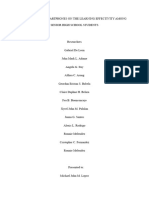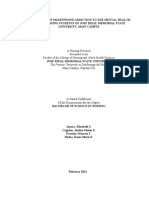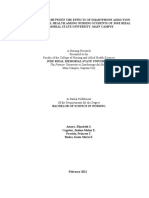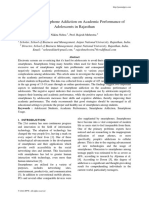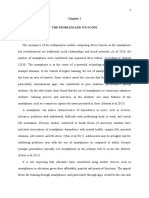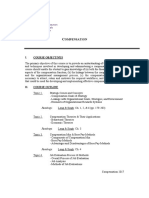0% found this document useful (0 votes)
24 views12 pagesConcept Paper Group 5 1
This concept paper investigates the quantitative effects of smartphone addiction on the mental health of senior high school students, focusing on issues such as anxiety, depression, and academic performance. The study aims to quantify these effects and inform interventions to promote student well-being, particularly within the context of the Professional Academy of the Philippines. By utilizing surveys and standardized scales, the research seeks to establish correlations between smartphone usage patterns and mental health metrics, ultimately guiding strategies to mitigate the negative impacts of smartphone addiction.
Uploaded by
icasimp30Copyright
© © All Rights Reserved
We take content rights seriously. If you suspect this is your content, claim it here.
Available Formats
Download as DOCX, PDF, TXT or read online on Scribd
0% found this document useful (0 votes)
24 views12 pagesConcept Paper Group 5 1
This concept paper investigates the quantitative effects of smartphone addiction on the mental health of senior high school students, focusing on issues such as anxiety, depression, and academic performance. The study aims to quantify these effects and inform interventions to promote student well-being, particularly within the context of the Professional Academy of the Philippines. By utilizing surveys and standardized scales, the research seeks to establish correlations between smartphone usage patterns and mental health metrics, ultimately guiding strategies to mitigate the negative impacts of smartphone addiction.
Uploaded by
icasimp30Copyright
© © All Rights Reserved
We take content rights seriously. If you suspect this is your content, claim it here.
Available Formats
Download as DOCX, PDF, TXT or read online on Scribd
/ 12







